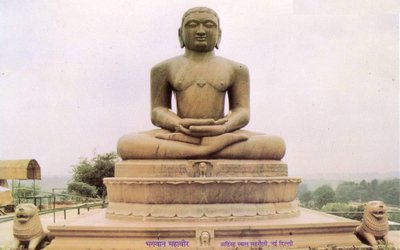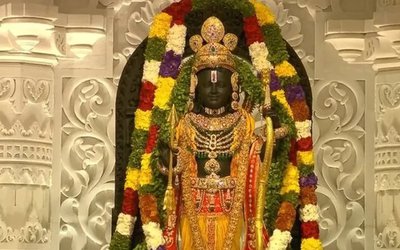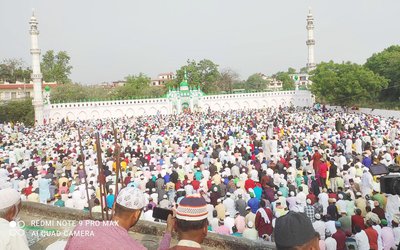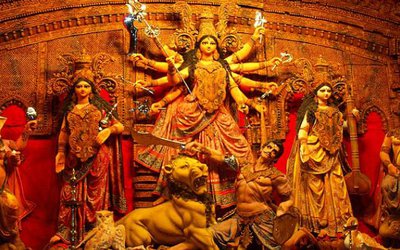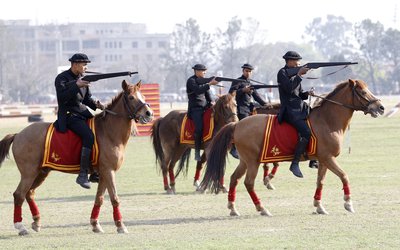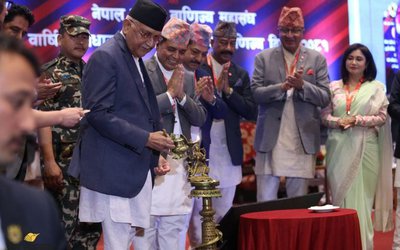
Navratri begins on October 15. Maa Shailputri is worshipped on the first day of Shardiya Navratri. Know its significance, puja vidhi, timings, and mantra.
The auspicious festival of Shardiya Navratri is here. The nine-day festival begins on October 15 and will end on October 24. It is devoted to the worship of Maa Durga and her nine avatars - known as Navadurga. Celebrated by Hindus with enthusiasm, there are four types of Navratri.
The one celebrated this month is Shardiya Navratri. It falls in autumn in the lunar month of Ashwin. Devotees commemorate Maa Durga's victory over demon Mahishasura during this time. The nine forms of Maa Durga worshipped during Navratri are Maa Shailputri, Maa Brahmacharini, Maa Chandraghanta, Maa Kushmanda, Maa Skandamata, Maa Katyayani, Maa Kalaratri, Maa Mahagauri and Maa Siddhidatri. On day 1, devotees worship Maa Shailputri. Scroll through to know who is Maa Shailputri and its significance, puja vidhi, timings and mantra for the first day of Shardiya Navratri.
Who is Maa Shailputri? Navratri 2023 Day 1 Significance:
Maa Shailputri is one of the nine forms of Maa Durga worshipped during the nine days of Navratri. Devotees honour her on the first day of the festival. She is believed to be the provider of prosperity. Devotees hail her as mother nature and pray for their spiritual awakening. She governs the Moon, the provider of all fortunes. According to Drik Panchang, after her self-immolation, Goddess Parvati was born as Lord Himalaya's daughter and was known as Shailputri. In Sanskrit, Shail means the mountain, and Shailputri is the daughter of the mountain.
Maa Shailputri has two hands - she carries Trishul in the right hand and a lotus flower in the left hand - and mounts a bull. Her colour is white, which denotes purity, innocence, peace and calmness.
Navratri 2023 Day 1 Puja Vidhi, Samagri and Timing
On Day 1 of Navratri, devotees of Maa Durga worship Maa Shailputri and seek blessings for their loved ones. The rituals begin with Ghatasthapana or Kalash Sthapana. During the puja, devotees install a pot at a sanctified place at home. They light a diya (lamp) for nine days near the pot. Ghatasthapana is one of the most significant rituals of Shardiya Navratri. They also place a pan with mud and navadhanya seeds and fill it with water.
Lastly, a kalasha filled with Ganga Jal and some coins, supari, and akshat (raw rice and turmeric powder) is placed in the water. Five mango leaves are placed around the Kalash and covered with coconut. Then, devotees place an oil lamp, incense sticks, flowers, fruits, and sweets near Maa Shailputri. A special bhog of Desi Ghee is also offered to the Goddess.
Panchang says that the Ghatasthapana muhurat begins at 11:44 am and ends at 12:30 pm on October 15.
Navratri 2023 Day 1 Puja Mantra, Prathana, Stuti and Stotra:
1) Om Devi Shailaputryai Namah
2) Vande Vanchhitalabhaya Chandrardhakritashekharam
Vrisharudham Shuladharam Shailaputrim Yashasvinim
3) Ya Devi Sarvabhuteshu Maa Shailaputri Rupena Samsthita
Namastasyai Namastasyai Namastasyai Namo Namah
4) Prathama Durga Tvamhi Bhavasagarah Taranim
Dhana Aishwarya Dayini Shailaputri Pranamamyaham
Trilojanani Tvamhi Paramananda Pradiyaman
Saubhagyarogya Dayini Shailaputri Pranamamyaham
Charachareshwari Tvamhi Mahamoha Vinashinim
Mukti Bhukti Dayinim Shailaputri Pranamamyaham
- Efforts to reform the economy are positive, but not enough: Dhakal
- Apr 10, 2025
- Government committed to preventing deterioration of business environment: PM Oli
- Apr 10, 2025
- Teachers Are Protesting On The Streets Of Kathmandu
- Apr 10, 2025
- Senior Advocate Vijaya Prasad Mishra elected as Bar Association president
- Apr 10, 2025
- No Amount of Washing And Cleaning Can Turn Former King Gyanendra Shah Into A Constitutional Monarch: Gagan Thapa
- Apr 10, 2025
